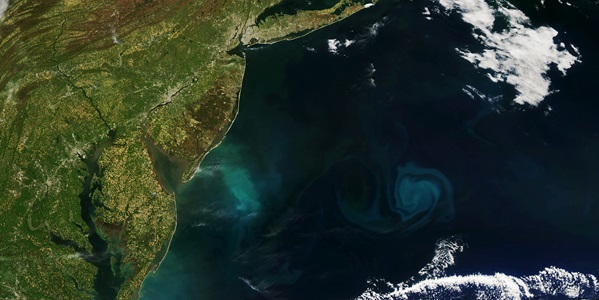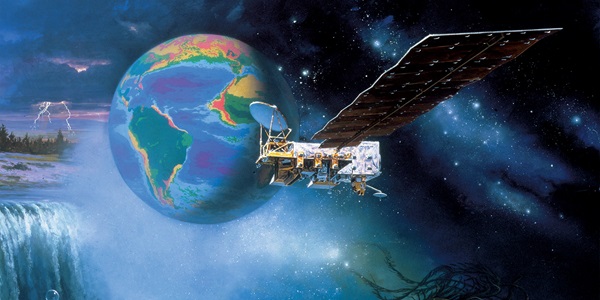3 Things to Know About a Little Satellite with a Big Impact on Earth
Earth Observing System - Aqua

What's going on here? When did this happen?
Most long-term environmental change slips into our lives unnoticed. Then comes the shock of recognition: the rainy season is longer, the trees are blooming earlier, what were once freak storms have become routine. What's going on here? When did this happen?
The Aqua Earth Observing System satellite is helping us better understand the causes and effects of global change. Data from its scientific instruments allows scientists to begin to piece together answers to some fundamental questions: What natural and human forces are at work? How do they interact? What can we predict? How can we prepare? What can we prevent?
Aqua is one of a series of orbiting Earth Observing System (EOS) platforms that are central to NASA's long-term study of the planet and its processes. The EOS program comprises remote sensing spacecraft, a data distribution system and international, multi-disciplinary teams of researchers. Its mission: provide a scientific basis for understanding the scope, dynamics and implications of global change.

Earth Observing System - Aqua
Launched in 2002, Aqua is collecting climate-related data with on-board sensors that measure clouds, precipitation, atmospheric temperature/moisture content, terrestrial snow, sea ice, and sea surface temperature during its six-year mission. Flying in low-earth orbit, Aqua passes over the same position each afternoon, allowing the comprehensive measurements needed to assess long-term change.
Northrop Grumman built the Aqua space platform and integrated its NASA-provided science instruments. The spacecraft is based on Northrop Grumman's modular, standardized T330 bus, a design with common subsystems easily scalable to the mission-specific needs of this and future earth observing missions. Comfortable weight, power and footprint margins readily accommodate payload replacement/refinement without impacting the basic design or the development schedule.
Contact Us
Nestor Vences Gonzalez
(310) 813-1733


